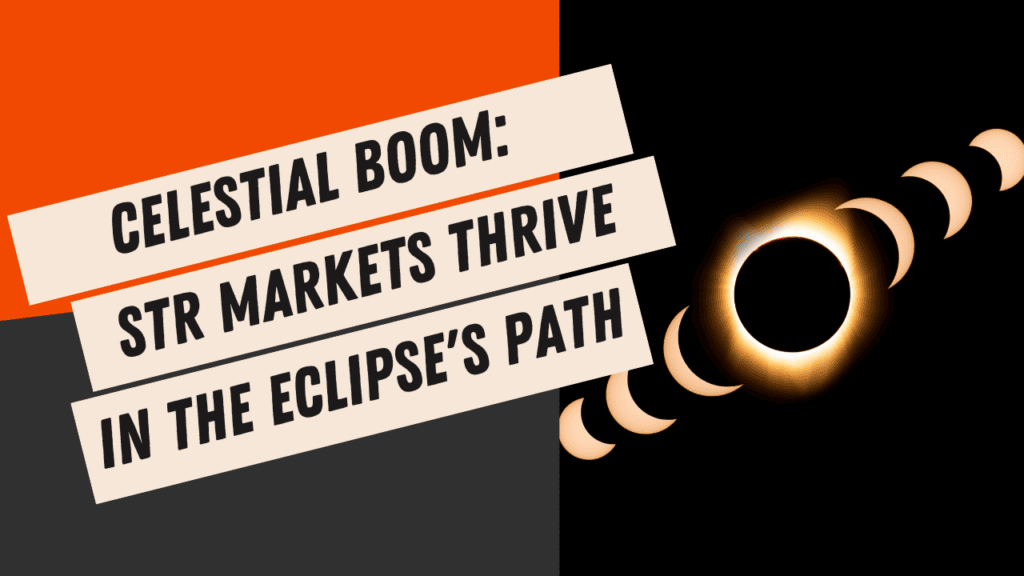In April 2024, a spectacular celestial event will traverse the United States and parts of Canada: a total solar eclipse. This phenomenon, where the moon passes between the Earth and the sun, temporarily casting a shadow over the Earth, has captured the imagination of millions. Notably, it has also had a significant impact on travel behaviors, leading to remarkable trends in the short-term rental (STR) market across several regions, including Vermont and Texas, where the eclipse’s visibility will be at its peak.
The Path of Totality: A Tourist Magnet
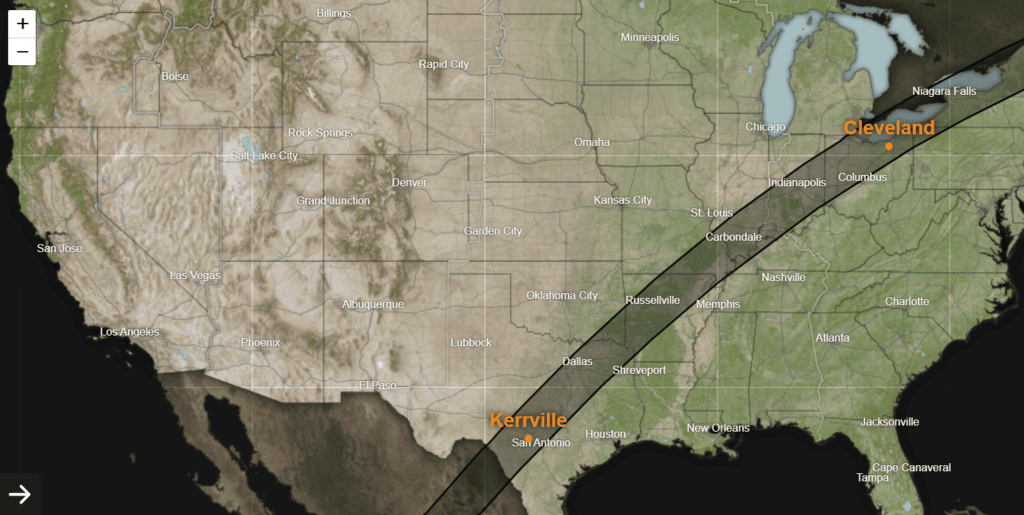
The upcoming total solar eclipse in April 2024 presents an unparalleled opportunity for the short-term rental (STR) industry, particularly in regions lying within the path of totality. This path, a narrow corridor stretching from Texas through states like Arkansas, Missouri, Illinois, Kentucky, and up to Vermont, is where observers can experience the full spectacle of the eclipse – complete darkness in the middle of the day, stars visible at noon, and the sun’s corona enveloping the moon.
Understanding the Path of Totality
The path of totality is essentially the shadow cast by the moon as it fully covers the sun, plunging the area beneath into total darkness. This phenomenon provides a unique viewing experience, making locations within this path highly sought after by eclipse enthusiasts. For the April 2024 eclipse, the path of totality will range between 108 and 122 miles wide, offering an expansive area for potential viewers and travelers. Being within this path is crucial for witnessing the total eclipse, a fact that significantly influences travel patterns and accommodations demand.
Impact on Tourism and STR Market
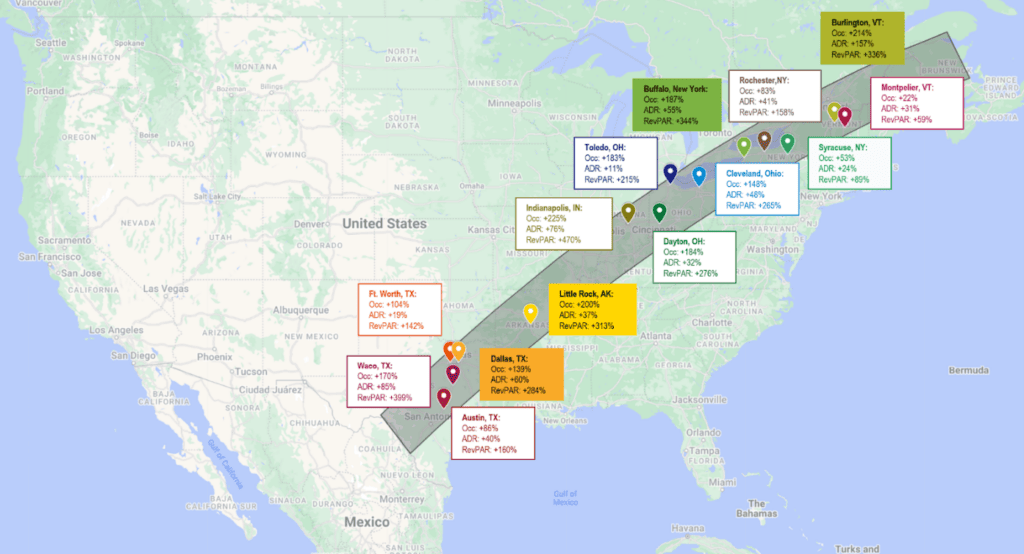
The anticipation for the April 2024 event has already begun to reshape travel and lodging trends in affected regions. Performance data from PriceLabs comparing April 5-9, 2024, with the same period in the previous year highlights a substantial increase in visitor interest and STR occupancy rates. States and cities within the path of totality are witnessing a surge in bookings, with many enthusiasts planning their trips well in advance to secure their spot for this celestial event.
Vermont: The Northern Gateway to the Eclipse
As the eclipse enters the United States through Vermont, a region traditionally in its low season post-ski season, there has been an astounding increase in STR occupancy rates. Burlington and Montpelier, Vermont’s capitals of culture and governance, respectively, have seen occupancy rates skyrocket.
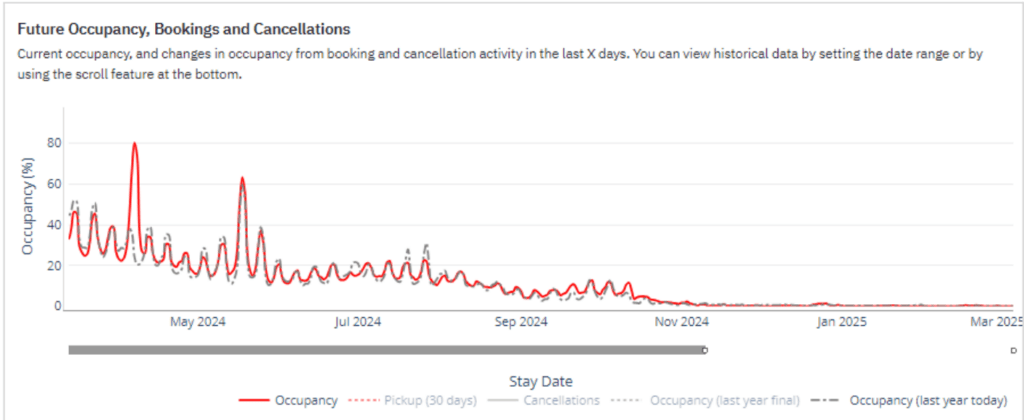
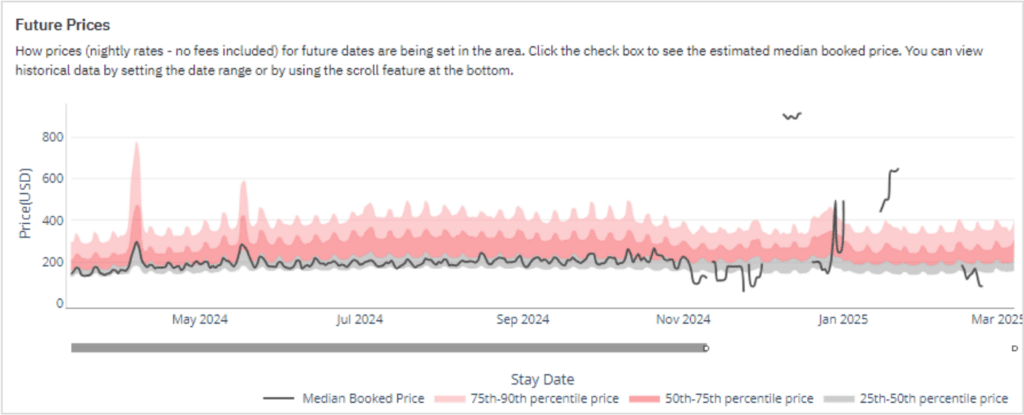
Burlington has seen a remarkable increase in occupancy rates to 60%, with a year-on-year growth of 114%. This surge is reflected in its Average Daily Rate (ADR), which jumped by 57% to $252, leading to a Revenue Per Available Rental (RevPAR) growth of 236%, amounting to $151.
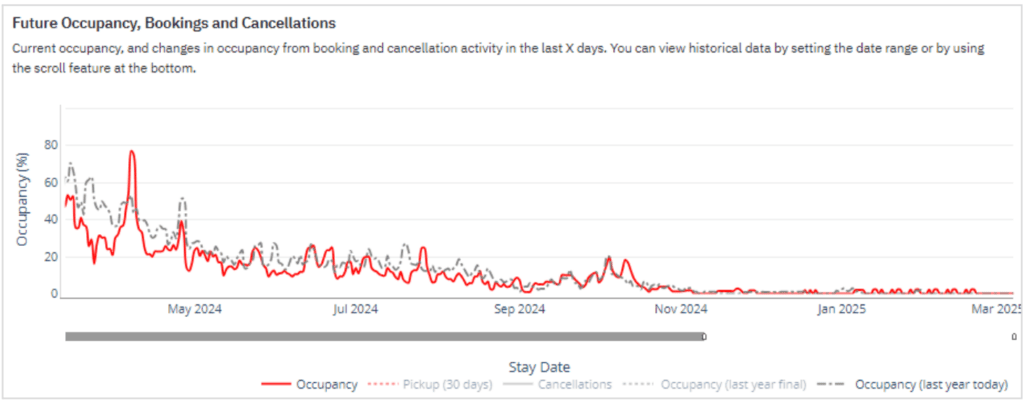
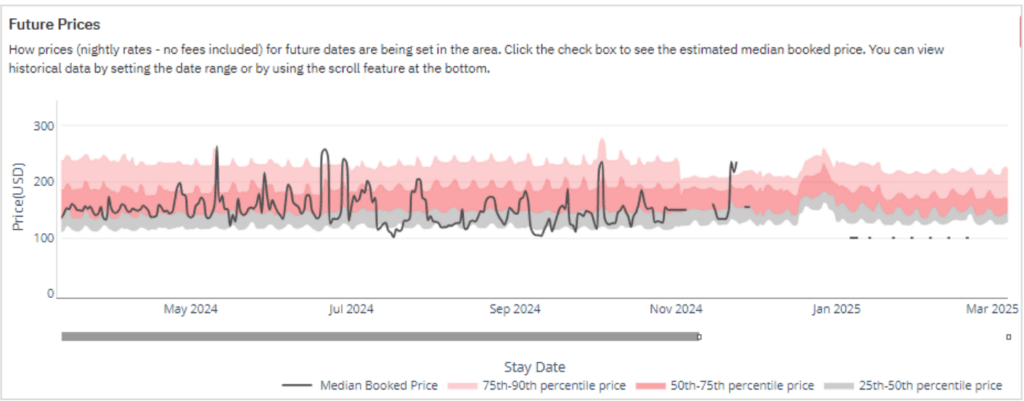
Montpelier, while experiencing a more modest growth in occupancy of 22% to reach 59%, still saw significant increases in ADR by 31% to $153 and RevPAR by 59% to $90.
Texas: The Eclipse’s Grand Exit
Texas, as the state where the eclipse makes its grand exit from the United States, has also seen significant STR market activity, particularly in Austin, Waco, Dallas, and Fort Worth.
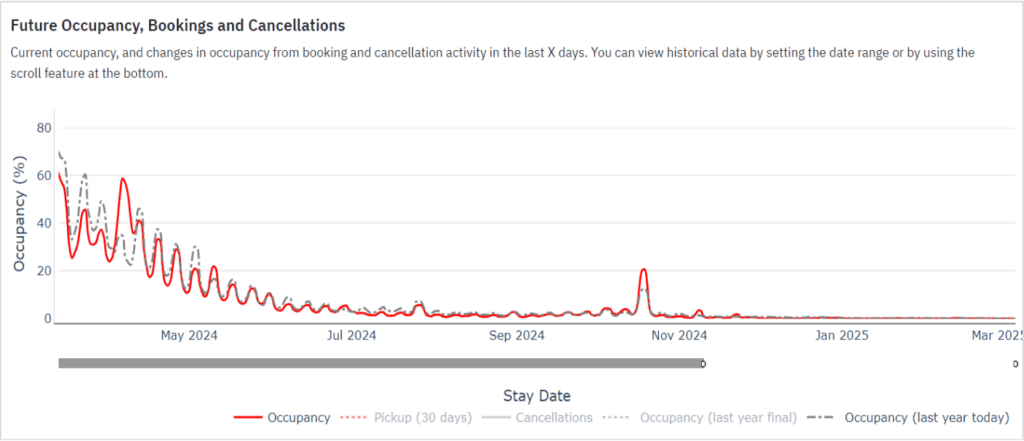
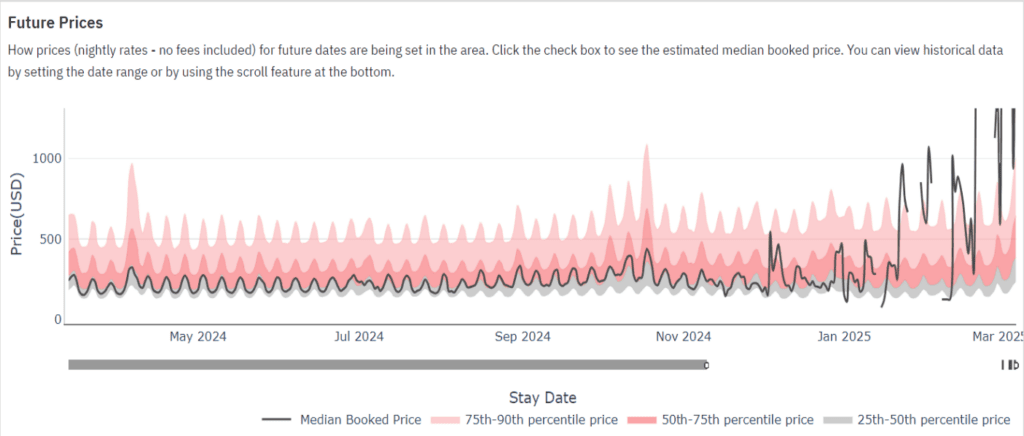
Austin experienced an 86% increase in occupancy rates, reaching 52%. The ADR grew by 40% to $275, while RevPAR skyrocketed by 160% to $144, underscoring the city’s capacity to capitalize on major events.
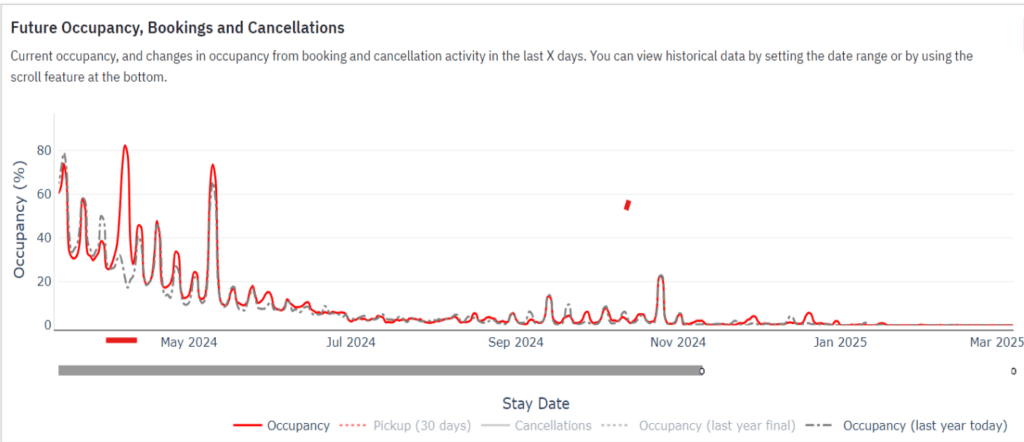
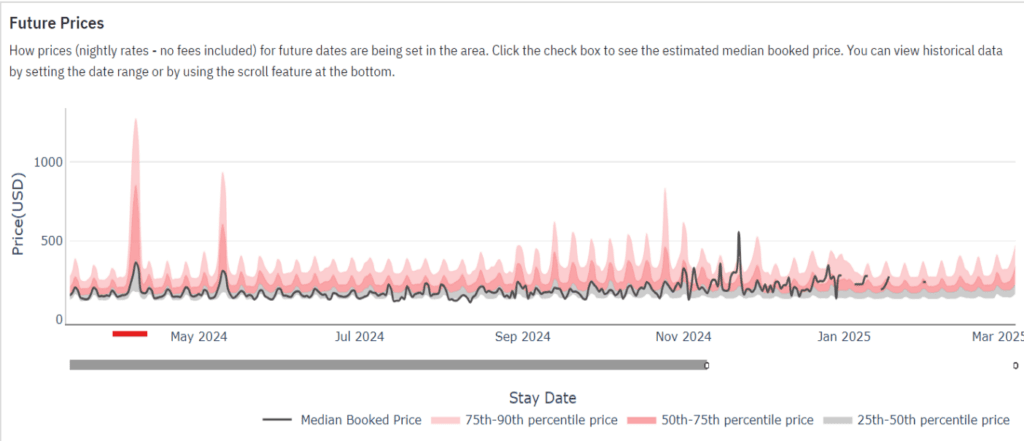
Waco saw a staggering 170% increase in occupancy, with its ADR and RevPAR rising by 85% to $276 and 399% to $178, respectively, showcasing the widespread impact of the eclipse beyond the largest cities.
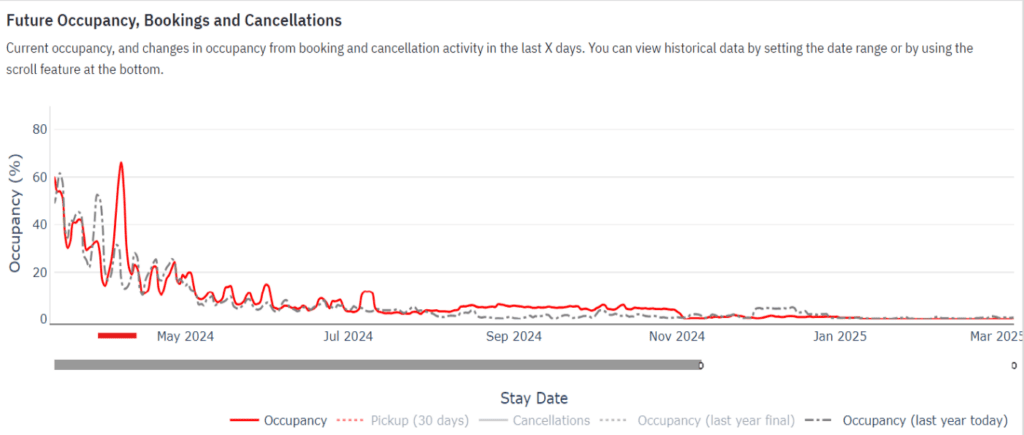
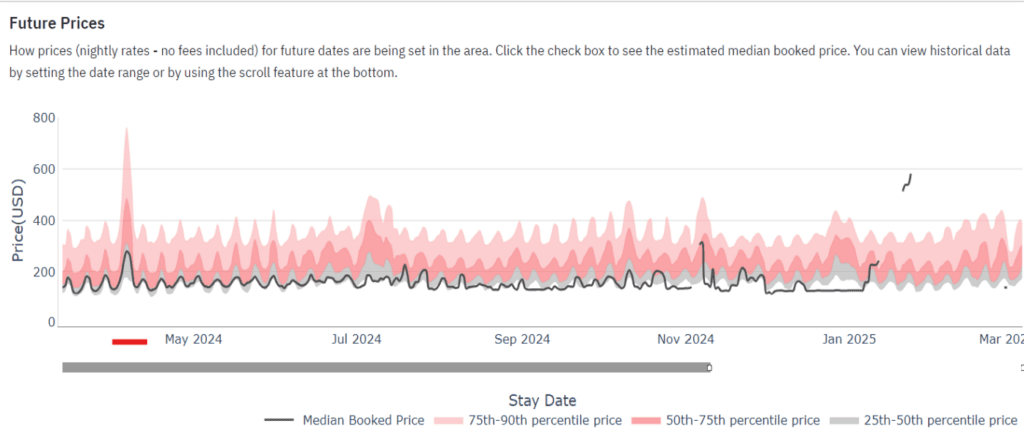
Dallas and Fort Worth reported growth as well, with Dallas’ occupancy growing by 139% and Fort Worth’s by 104%, demonstrating the broad appeal and economic impact of the eclipse across different urban areas in Texas.
Arkansas: Little Rock’s Unexpected Boom
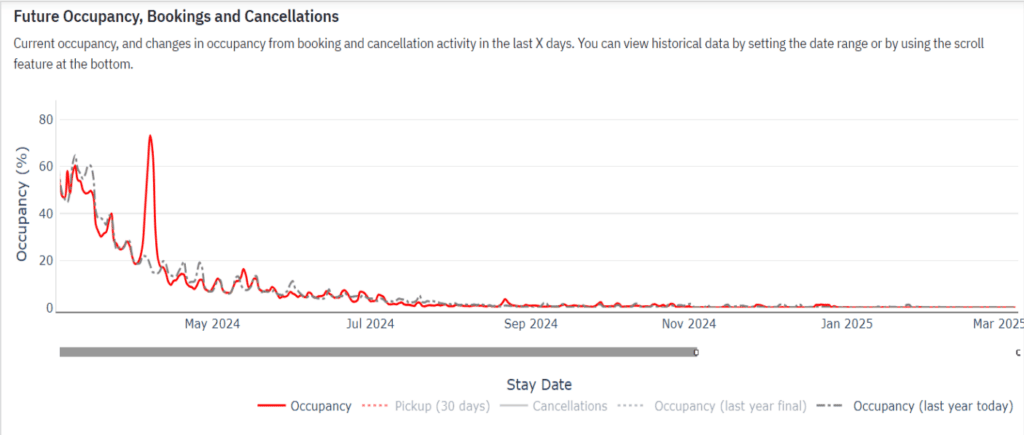
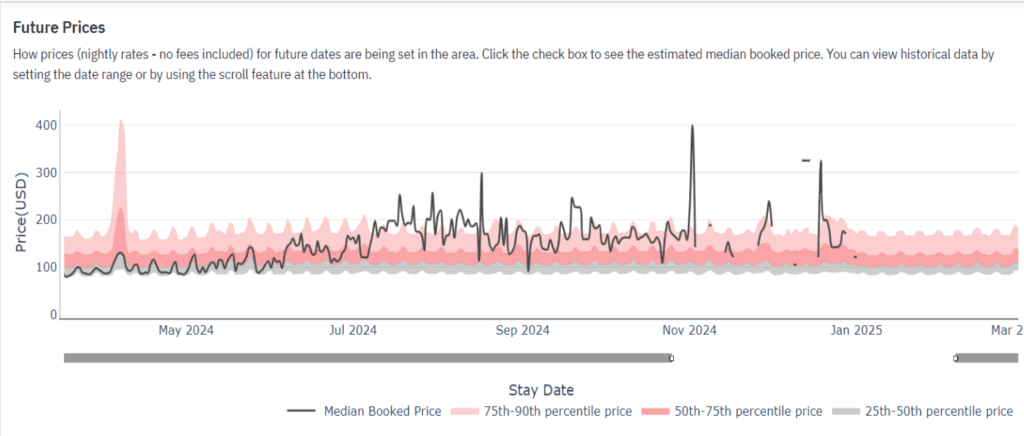
Little Rock, Arkansas, has seen a surprising 200% increase in occupancy year-on-year, with an occupancy rate of 55% during the eclipse period. This is accompanied by a 37% rise in ADR and an astounding 313% growth in RevPAR. These figures reveal a significant demand in areas not traditionally associated with prime eclipse viewing, showcasing the broad appeal of the event and its potential to drive tourism across diverse regions.
Indiana: Indianapolis’ Remarkable Growth
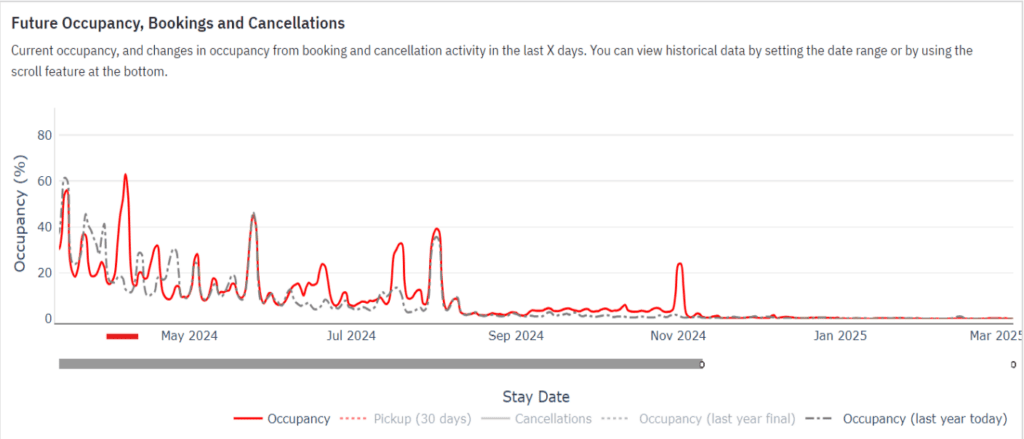
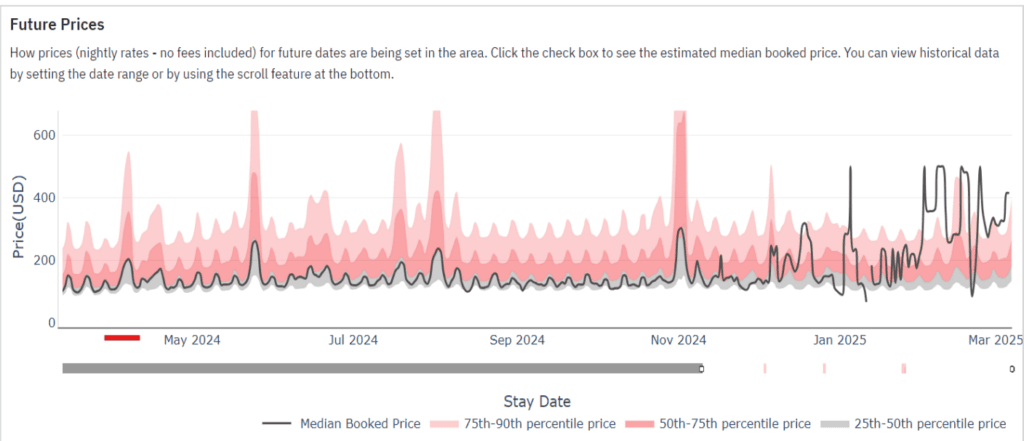
Indianapolis has demonstrated exceptional growth with a 225% year-on-year increase in occupancy, achieving a 47% rate. The ADR rose by 76%, and RevPAR saw a 470% increase, emphasizing the substantial economic impact of the eclipse on Indiana’s STR market. This highlights the potential of astronomical events to attract considerable interest and stimulate economic activity, even in inland states.
Ohio: Benefiting Statewide
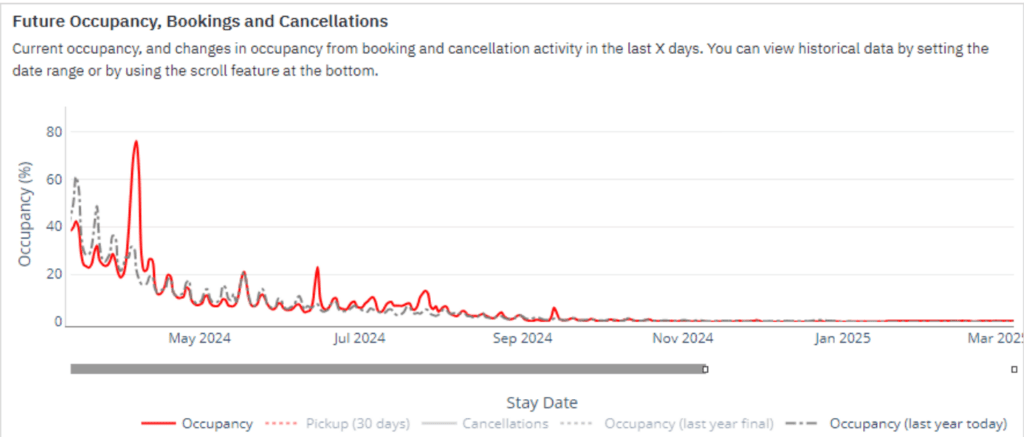
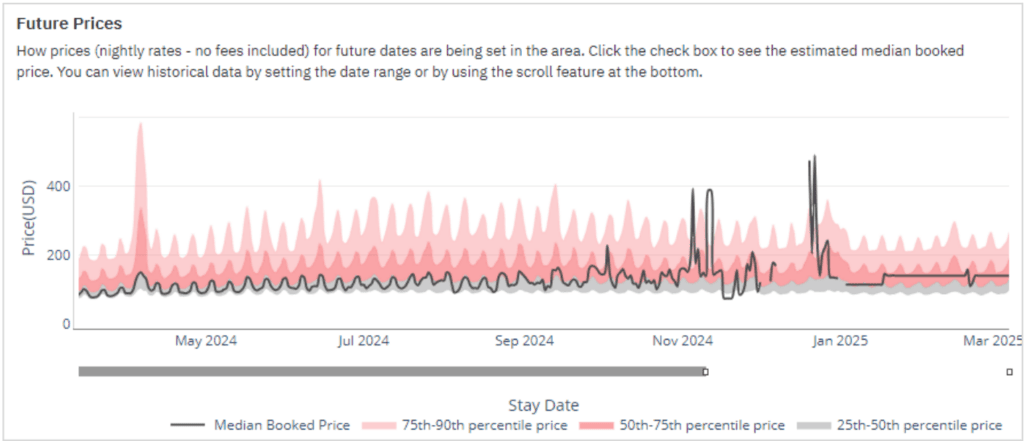
Ohio has enjoyed a statewide boost, with cities like Dayton, Toledo, and Cleveland experiencing occupancy increases ranging from 148% to 183% year-on-year. These spikes in demand have led to significant ADR and RevPAR increases across the state, indicating the eclipse’s ability to affect traveler behaviors and positively impact the STR market on a broad scale.
New York: Northern Cities’ Advantage
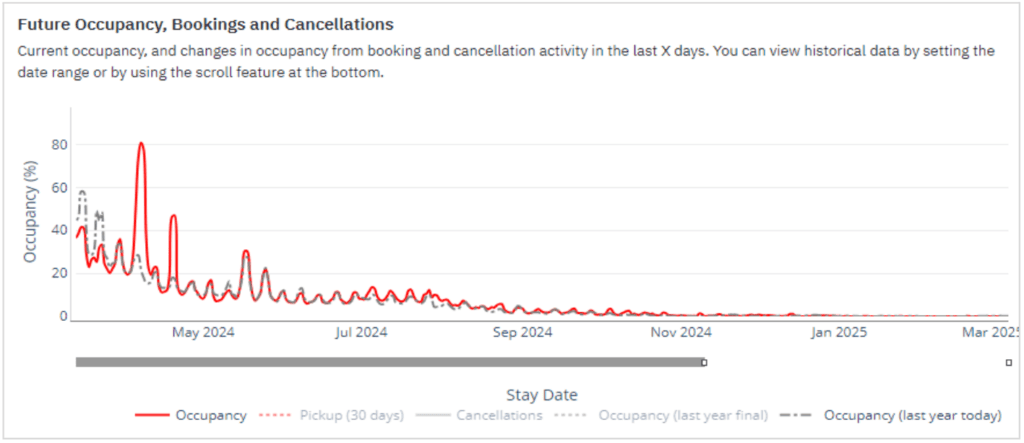
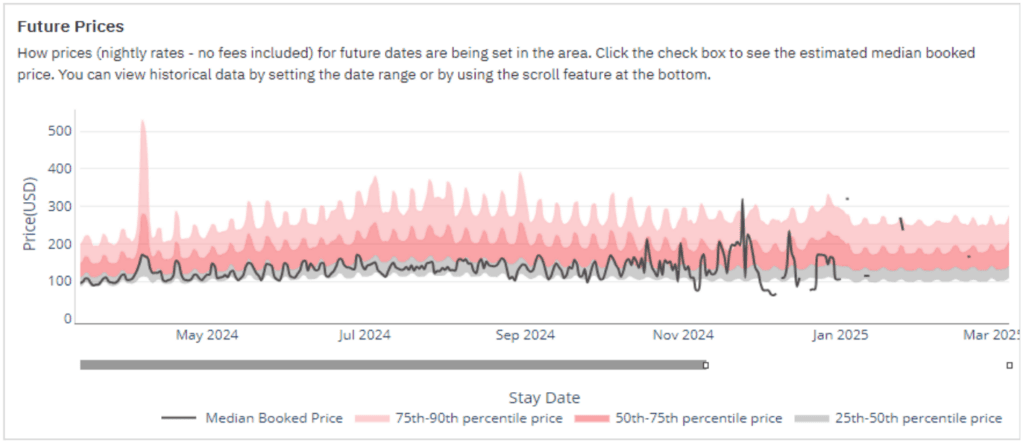
In New York, northern cities such as Buffalo, Rochester, and Syracuse have witnessed substantial occupancy and revenue growth. Buffalo’s occupancy rate soared to 64%, with a year-on-year growth of 187%. The ADR and RevPAR increases across these cities further signify the eclipse’s far-reaching impact, extending benefits to regions not directly on the path of totality but still experiencing heightened travel activity.
Catering to the Curious: Expanding STR Market Reach Through Unique Events
Geographical Phenomena as Opportunities: The eclipse demonstrates the significant impact geographical events can have on STR demand. Rental managers should actively monitor and prepare for similar events, adjusting pricing and marketing strategies to capture increased demand.
Off-Season Reimagined: Vermont’s example highlights the potential to overturn traditional off-season lulls. Innovative offerings and targeted marketing can attract travelers during typically slow periods, diversifying revenue streams.
Broad Market Appeal: The widespread increase in occupancy across various states indicates a broad market interest in unique events. Rental managers should consider how to position their offerings to appeal to diverse traveler segments, leveraging local and regional events.
Data-Driven Decision Making: The stark differences in occupancy and revenue growth across states underscore the importance of data in shaping STR strategies. Managers should invest in analytics to understand market trends and traveler preferences, tailoring their offerings to meet emerging demands.
Conclusion
The solar eclipse’s impact on the STR market across these states demonstrates the profound effect that singular events can have on tourism and local economies. From Vermont’s off-season surge to Texas’s strategic positioning, each state experienced unique shifts in market dynamics, highlighting the importance of adaptability and strategic pricing in the STR sector. This event underscores the potential for local economies to capitalize on natural phenomena and other significant events, stressing the need for STR operators to remain vigilant and responsive to market opportunities.
The solar eclipse phenomenon serves as a powerful case study in leveraging unique opportunities for economic gain within the STR market.

